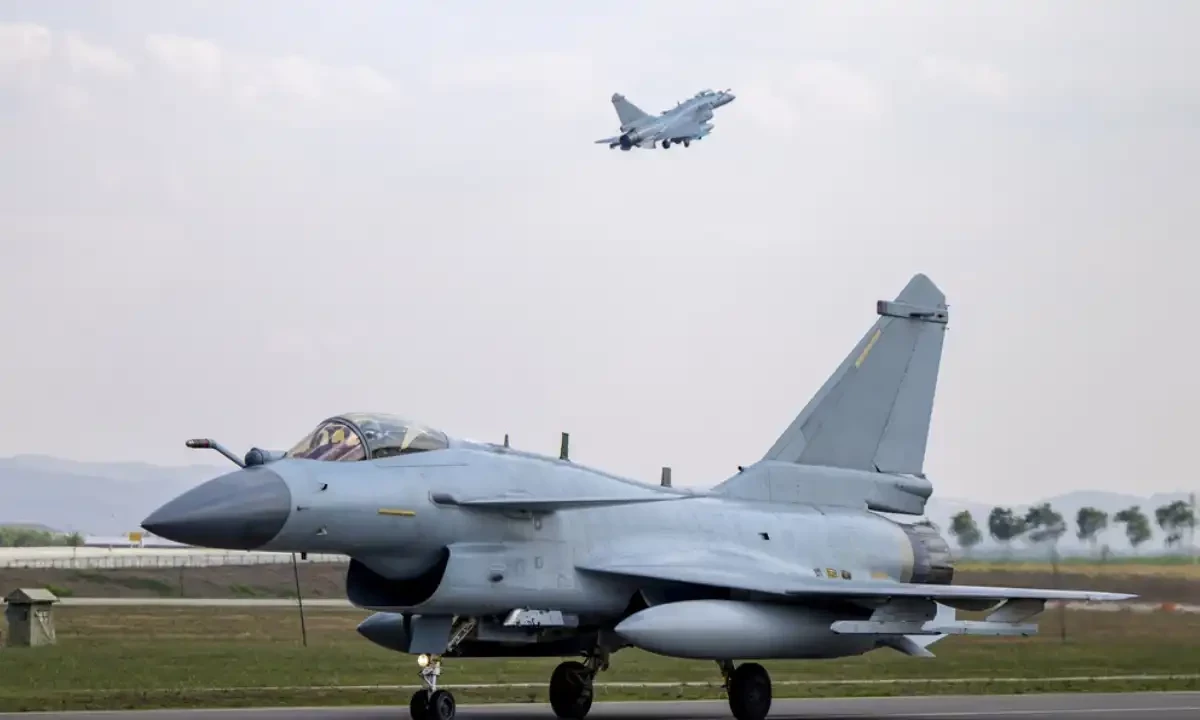Battle-tested China’s J-10CE fighter jet steals spotlight in Malaysia
China’s J-10CE fighter jet has become the focal point at the Langkawi International Maritime and Aerospace Exhibition (LIMA) 2025, which opened on May 20 in Malaysia.
The aircraft was battle-tested in the recent India-Pakistan war and has been credited with taking down Rafales, though India has not officially confirmed the losses.
The advanced multirole jet, an export variant of the Chengdu J-10C used by the Chinese People’s Liberation Army Air Force (PLAAF), is being promoted as a cost-effective and capable option for countries looking to upgrade their air capabilities.
The aircraft has drawn significant attention from military officials, defense experts, and international delegates. Its reported combat debut in South Asia has fueled further interest, with analysts examining its battlefield performance and export potential.
Held from May 20 to 24, LIMA 2025 has brought together defense companies from around the world, all competing for a share of Southeast Asia’s growing defense market.
China’s state-owned China National Aero-Technology Import & Export Corporation (CATIC) is leveraging the J-10CE’s showcase to challenge the dominance of Western and Russian defense manufacturers in the region.
It competed against American F/A-18 Super Hornets, French Rafales, and Russian Su-57Es.
Features
-
The J-10CE is a 4.5-generation multirole fighter aircraft, developed as an export variant of the J-10 series, which first entered service with China’s People’s Liberation Army Air Force (PLAAF) in 2006.
-
It is designed to compete with Western fighter jets such as the American F-16 Fighting Falcon and the Swedish Saab Gripen.
-
The aircraft is developed by the Chengdu Aircraft Industry Group and is tailored specifically for international markets.
-
It is powered by a single WS-10B turbofan engine with thrust-vectoring capabilities, enhancing its maneuverability for high-agility combat scenarios.
-
The engine produces approximately 31,000 pounds of thrust, enabling the jet to reach a maximum speed of Mach 1.8.
-
The J-10CE has a combat radius of about 550 nautical miles, making it suitable for a wide range of operational missions.
-
Its airframe features a delta-wing configuration with forward canards, providing a balance of speed, agility, and stability during flight.
-
The aircraft is equipped with an advanced avionics suite, including an active electronically scanned array (AESA) radar, offering superior target tracking and engagement compared to older mechanical radar systems.
-
The J-10CE is equipped with an infrared search and track (IRST) system, enabling passive detection of enemy aircraft and improving survivability against stealth threats.
-
It is integrated electronic warfare suite, which includes radar warning receivers and various countermeasures, allows it to operate effectively in contested environments.
Global attention
The J-10CE’s combat effectiveness gained global attention following reports of its deployment by the Pakistan Air Force (PAF) in May 2025.
According to Reuters, PAF jets equipped with PL-15E missiles downed at least two Indian fighter jets, including a Rafale, in a skirmish over Jammu and Kashmir.
Interest in the J-10CE has extended to high-level Malaysian officials, as shown by Deputy Prime Minister Ahmad Zahid Hamidi’s visit to the Chinese booth at LIMA.
Western defense agencies are also closely monitoring the aircraft’s performance, with intelligence analysts reportedly analyzing radar signatures and combat data to better understand the jet’s capabilities.
China has also offered J-10CE squadrons to other countries, including Colombia, signaling its wider effort to extend its defense presence in Latin America and other regions.
Comparison
The J-10CE is often compared to the American F-16V and Swedish Gripen E. While the F-16V benefits from a strong global support network and advanced weapons compatibility, its cost can be a barrier.
The Gripen E offers efficient logistics and strong electronic warfare capabilities but also comes with a high price tag. The J-10CE stands out for its balance of performance and affordability.
The French Rafale, operated by India and offered to Malaysia, is a twin-engine multirole fighter with superior range and payload capacity, but its $200 million cost per unit, as seen in India’s 2016 deal for 36 aircraft, puts it out of reach for many nations.
In contrast, the J-10CE’s lower cost and similar capabilities made it an attractive option, although concerns remained about the reliability of its systems and China’s capacity to provide long-term logistical support.
Following reports of the jet’s success against Indian aircraft, shares of AVIC Chengdu Aircraft, the J-10’s manufacturer, surged by more than 40% within two days, according to The Express Tribune.
On the other hand, Dassault Aviation, the maker of the Rafale, experienced a 5% drop in its stock after India’s reported losses during Operation Sindoor on May 7, 2025, as noted by LiveMint.
Origin
Originating in the 1980s, the J-10 series was developed to reduce China’s reliance on foreign technology.
Early variants used Russian AL-31F engines, but newer models, including the J-10CE, are powered by domestically produced WS-10 engines.
Read more
Chinese experts claim breakthrough in tracking U.S. stealth radars
Surge seen in Chengdu Aerospace shares after Pakistan shot down Indian jets
Reuters: US officials say Pakistan brought down two Indian fighter aircraft
For the latest news, follow us on Twitter @Aaj_Urdu. We are also on Facebook, Instagram and YouTube.





















Comments are closed on this story.